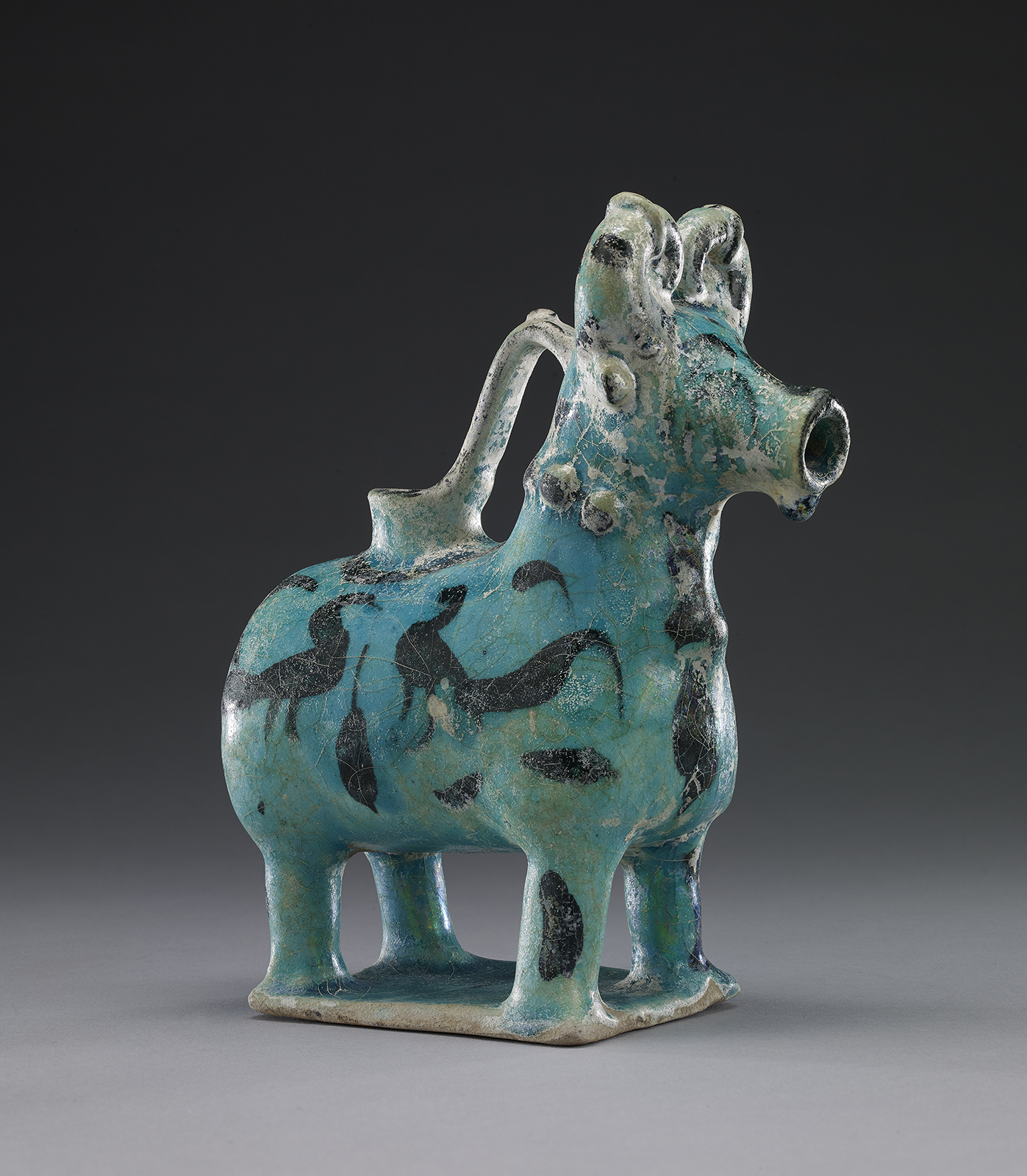Click on the image to zoom
Animal-Shaped Pitcher (Aquamanile)
- Accession Number:AKM793
- Place:Iran
- Dimensions:19 cm x 14 cm x 10 cm
- Date:late 12th to early 13th century
- Materials and Technique:fritware, with black decoration under a transparent turquoise glaze
-
24. Bellerive Room
Stop #5 of Bellerive Room Highlights
By the 11th century, a new kind of material for making ceramics had been developed, one that incorporated quartz and glass frit into the clay. This allowed potters to make vessels with thinner walls that could also be shaped with fine molds. New alkaline glazes offered a range of brighter colours, and turquoise became especially popular.
How this curious vessel, decorated with peacocks and leaves, was used remains unclear. Given that the bull is an ancient symbol of fertility and renewal, it may relate to ancient annual spring festivities such as Nowruz, the Persian “New Year”— which is still celebrated in Iran, as well as in Canada and across the world.
— Marika Sardar
Next up in the Bellerive Room Highlights Tour:
Note: This online resource is reviewed and updated on an ongoing basis. We are committed to improving this information and will revise and update knowledge about this object as it becomes available.


 Cockerel-Headed Ewer,
Cockerel-Headed Ewer,